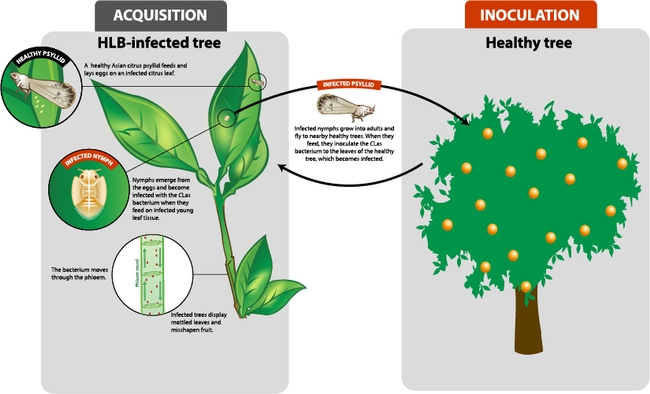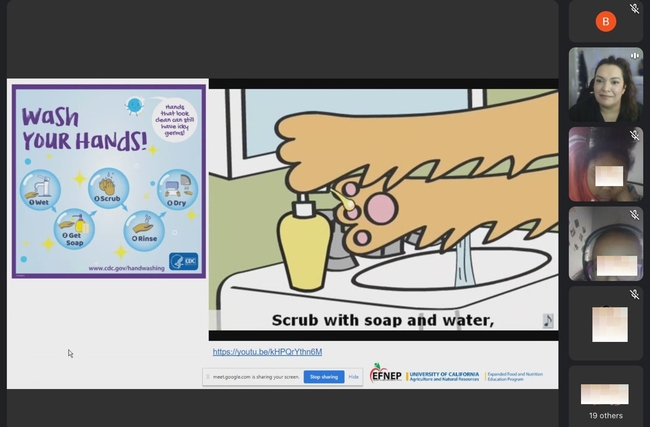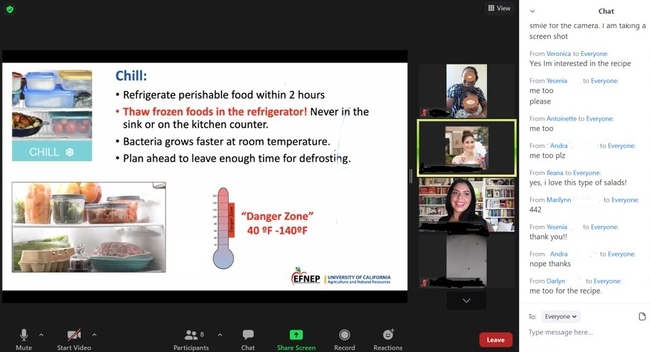- Author: Peggy Goodenow Lemaux
After attending UC ANR's Science for Citrus Health webinars, over 50% of participating citrus professionals say they intend to adopt actions related to psyllid management. These practices can help safeguard abundant, healthy food for all Californians.
The Issue
Huanglongbing? Never heard of it? Why should I care? Maybe you need to learn more?
Huanglongbing, HLB, a bacterial disease of citrus also called Greening Disease, is spread by the Asian Citrus Psyllid. It causes the citrus fruits to be deformed and taste salty and bitter. HLB was first reported over a century ago in southern China. But why is it a problem for U.S. citrus? Diseases don't “respect” country borders and in 1998 the psyllid and the disease arrived in Florida in the early 2000's. Because there is no cure, damage caused in the largest orange producing state was extensive. By 2019, citrus production decreased in Florida by 74%. Despite federal bans on interstate movement of host plants, the psyllid did not abide by those rules!
And the disease also easily spreads from state to state. The first tree with HLB in California was found in 2012 in Los Angeles County. Then the question became, even though millions of research dollars were being spent, is there progress toward a cure? What could be done in California to slow the spread? Much was learned in Florida's battle and much is being learned through research. But it is hard for growers, the media, and the public to understand how that information might be used in California.
How UC Delivers
To address this information gap, Cooperative Extension Specialist Beth Grafton Cardwell and I started Science for Citrus Health (SCH) in 2015. It is designed to spread in lay language information about research aimed at understanding and combating HLB. SCH is now a cooperative effort with individuals from California, Florida and Texas, involving many activities.
These included developing Snapshots, short, two-page pieces on HLB research, written in lay language, posted on the SCH website, on Instagram, and disseminated at citrus meetings. In total, 45 Snapshots have been written, focusing on five themes related to detection, disease and psyllid management and the tools being used. Another resource for educational efforts is a large PowerPoint slide set, covering genetics, as well as regulatory and consumer issues. Recently efforts expanded, owing to grad students and postdocs, to include a YouTube channel on HLB and a popular podcast series that focuses on HLB researchers, their approaches and their career stories. Another effort involves translating citrus information and Snapshots into Spanish to reach Hispanic growers and workers in the citrus industry. In 2021, five informational webinars were convened on topics, such as ACP and HLB Management, the use of particle films to manage HLB, and citrus thrips. A recent webinar on the biology and management of ACP was presented in Spanish. These webinars attracted international audiences of up to 300 people.
The Impact
Post-meeting polls from UC ANR's Science for Citrus Health webinars indicated that more than 50% of attendees would implement at least one new practice they learned at the session. Research from the University of Florida has shown that the application of particle film screens, for example, has the potential to reduce ACP populations by more than 80% compared to monthly insecticide treatments, thereby contributing to UC ANR's public value of safeguarding abundant, healthy food for all Californians. Creation and proliferation of SCH efforts, providing information on research efforts focused on HLB, is an important educational resource for citrus growers, the media and industry. Another resource provides slides and educational materials to be used by educators for presentations to these groups, and the public. These newly created educational resources, some in Spanish, are unparalleled on other citrus sites.
- Author: Chutima Ganthavorn
- Author: Katie Panarella
- Contributor: Shyra Murrey
EFNEP delivered food safety lessons to over 4,000 participants last year, with nearly 2,500 reporting improvements in food safety knowledge and practices. EFNEP's work contributes to UC ANR's public value of safeguarding sufficient, safe, and healthy food for all Californians.
The Issue
The foodborne illness burden in the U.S. is estimated at 48 million cases, 128,000 hospitalizations, and 3000 deaths each year (CDC.gov). This burden will likely increase during the coronavirus pandemic since more families are now cooking and preparing meals at home. With limited consumer knowledge about food safety, the likelihood of foodborne illness increases. Moreover, today's consumers often rely on the internet for health information. Studies have found inaccurate food safety advices on TV cooking shows and recipe blogs. A recent study reveals misinformation abounds on social media and internet question and answer websites.
How UC Delivers
Food safety is one of the four core areas of the Expanded Food and Nutrition Education Program (EFNEP). California EFNEP, a statewide program of UC ANR, teaches food safety and safe food handling practices as part of the nine-lesson nutrition series for limited-resource families in 19 counties. Adult participants, mostly those responsible for preparing meals for the family, learn reliable food safety information based on research such as food safety basics, the four core practices to prevent foodborne illness, safe minimum cooking temperature, and proper storage of leftovers. In addition to teaching concepts, EFNEP educators demonstrate proper handwashing and other safe food handling practices during recipe demonstration. Youth participants in lower grades (K-2) learn about when and how to wash hands. EFNEP educators use the Glo-germ demonstration, which illustrates proper handwashing. Youth in upper grades also learn about food safety basics and how to store and handle food safely. During the pandemic, EFNEP quickly pivoted to offer classes virtually so that food safety lessons could continue. During the 2020 program year, EFNEP statewide delivered food safety lessons to 2,981 adult participants and 1,323 youth.
The pre/post EFNEP Adult Questionnaire utilized to evaluate the effectiveness of EFNEP shows 85% (1850 of 2187) of participants improved in one or more food safety practices, such as washing hands before preparing food, washing all items and surfaces after cutting raw meat or seafood, not thawing frozen food at room temperature, and using a meat thermometer. Thawing frozen food at room temperature is not recommended but appears to be common among EFNEP participants; only 29% met this recommendation before the training. After the EFNEP lesson, 65% of participants indicated they now less often thaw frozen food at room temperature. Among youth participants from grades K-12, 55% (733 of 1323) of children and youth gain knowledge or use safe food handling practices more often. Research shows that these food safety practices can reduce the prevalence of foodborne illness. Therefore, these outcomes demonstrate how EFNEP contributes to improved food safety and the public value of safeguarding sufficient, safe, and healthy food for all Californians.






